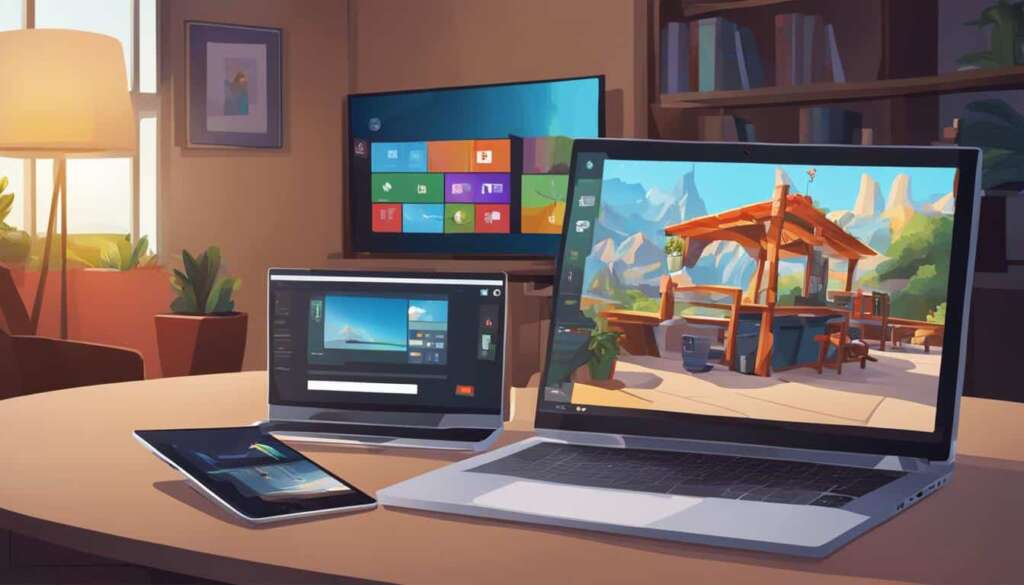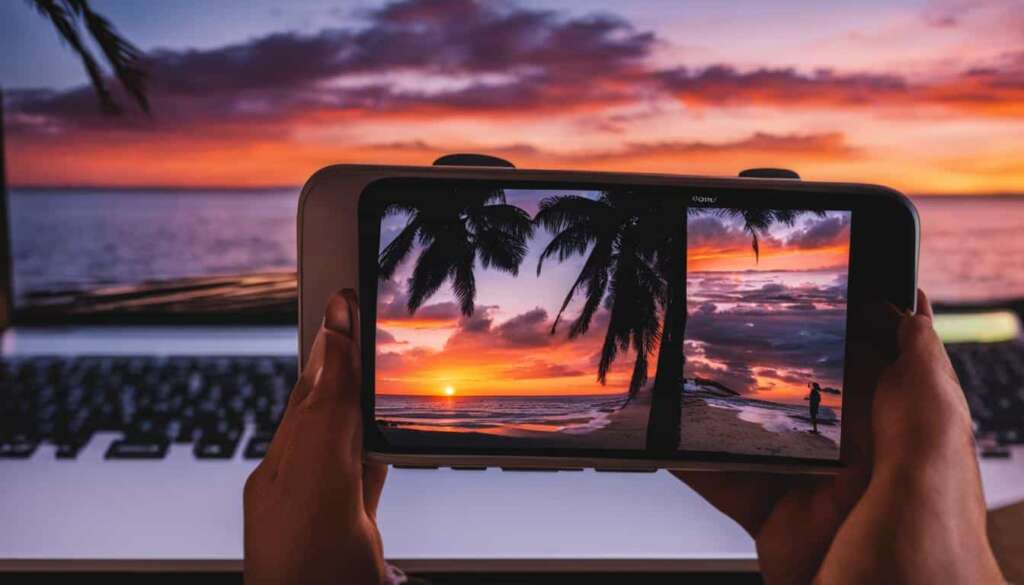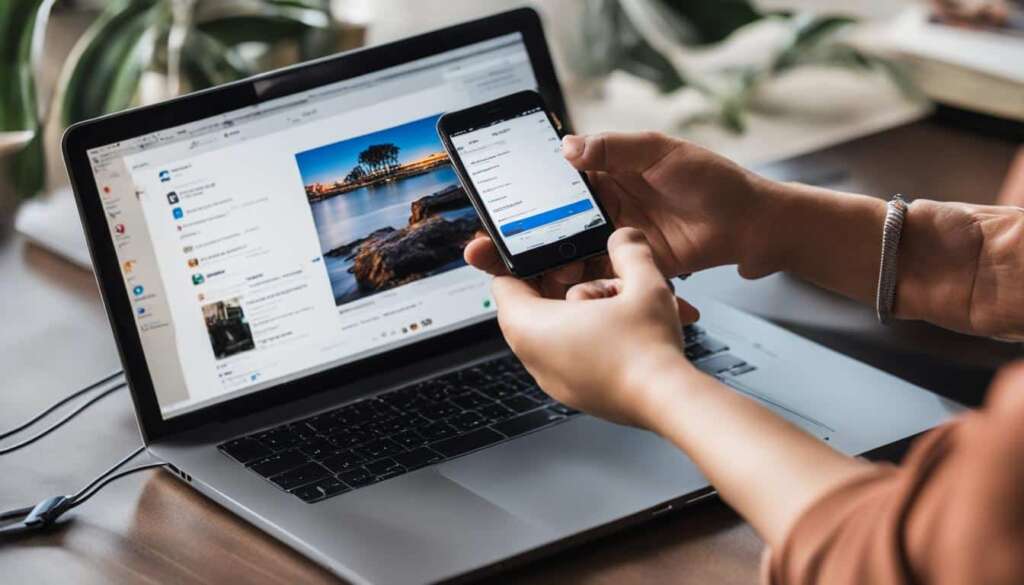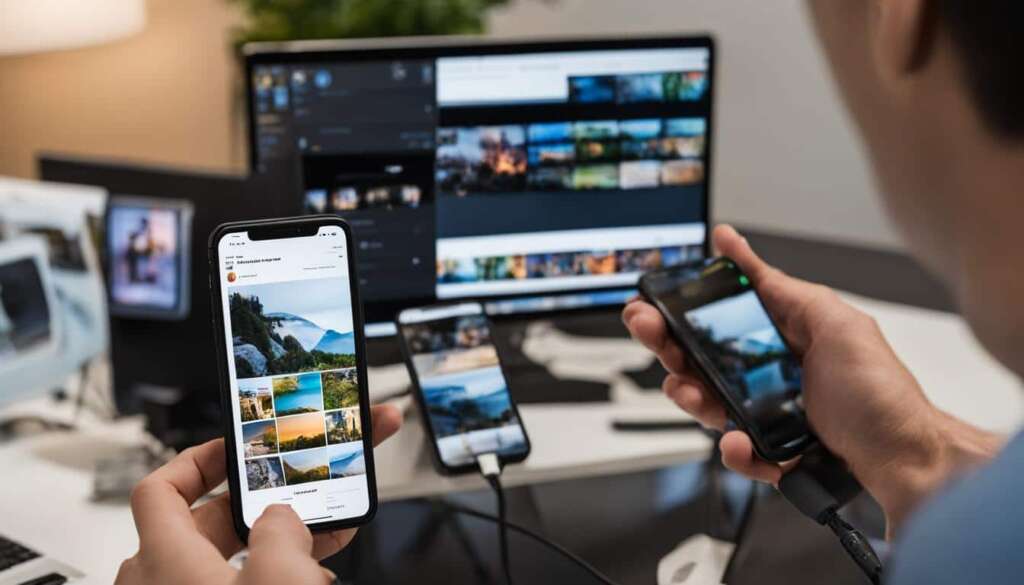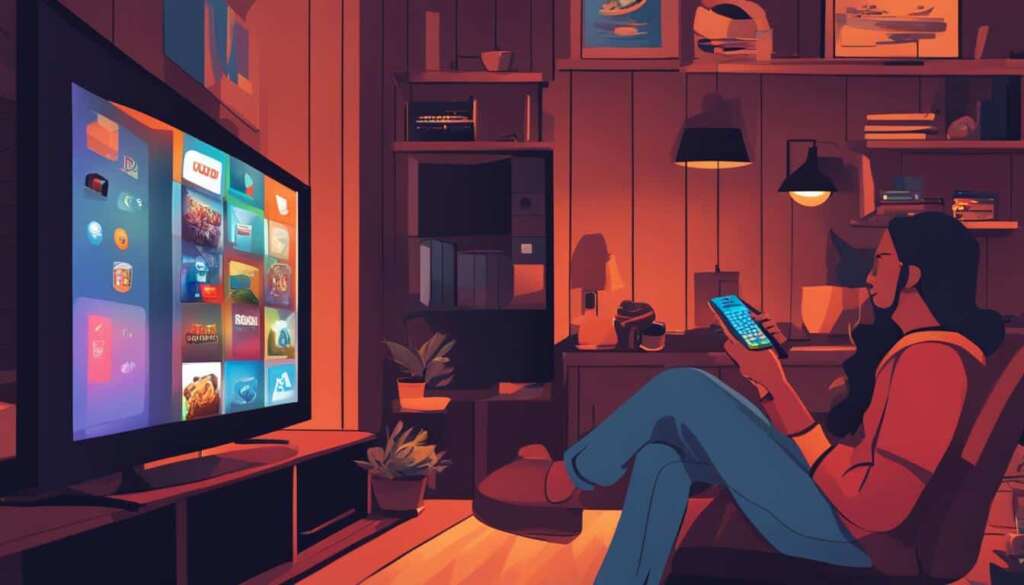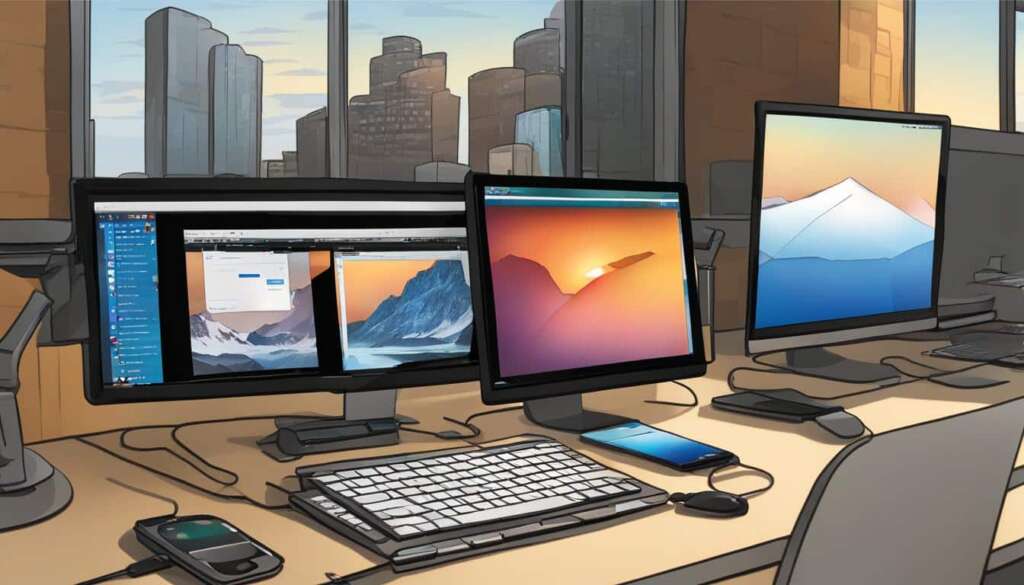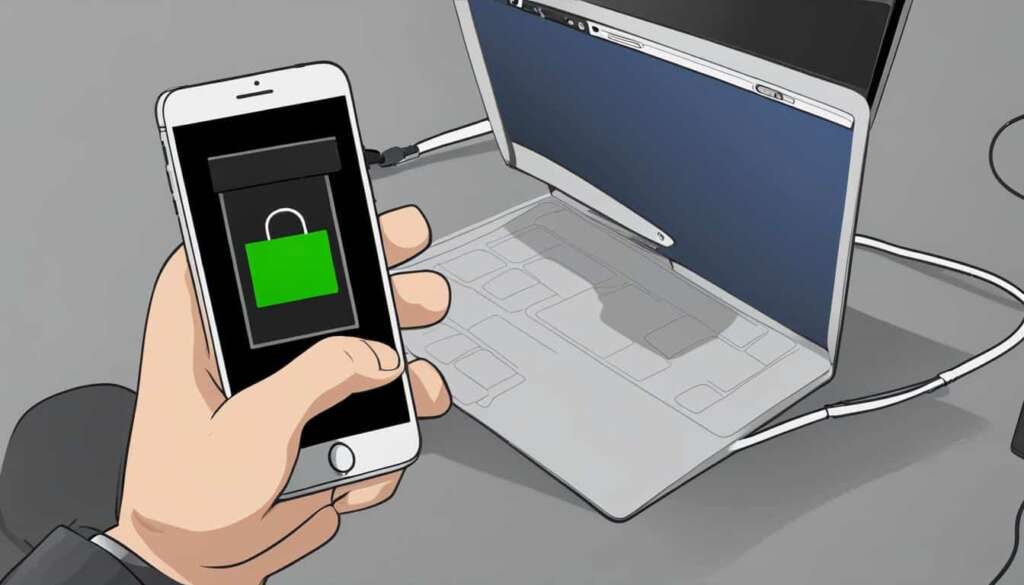Table of Contents
Welcome to our comprehensive guide on how to cast your PC to your TV. Whether you want to enjoy your favorite movies, play games, or give presentations, screen mirroring allows you to transfer your PC’s display to a larger screen, providing an immersive experience. In this streaming guide, we will walk you through the process of casting your PC to your TV, enabling you to enjoy your content on a bigger screen.
Screen mirroring, also known as casting, offers a convenient way to share your PC’s display with your TV. It allows you to view your photos, videos, and even browse the internet directly on your TV screen. With the help of third-party apps and wired mediums, you can effortlessly cast your PC to your TV and enjoy a seamless streaming experience.
To begin the casting process, there are a few things you need to prepare. Firstly, it’s essential to check your TV model and its compatibility with screen mirroring software such as Miracast or Google Chromecast. You’ll also need to ensure that you have the necessary cables and ports, as well as a stable Wi-Fi connection. Additionally, updating your PC’s software and drivers is crucial for a smooth casting experience.
In the upcoming sections, we will provide detailed instructions on how to cast your PC to your TV using various methods, including wired connections and wireless technologies such as Miracast and Google Chromecast. We will also explore other screen mirroring protocols and media servers that offer alternative options to cast your PC to your TV.
Stay tuned as we guide you through the step-by-step process of casting your PC to your TV, unlocking a whole new level of entertainment and productivity.
What You Need to Prepare before Casting PC to TV
Before casting your PC to your TV, there are certain preparations you need to make to ensure a smooth and successful experience. Below are the key factors you should consider:
1. TV Model and Compatibility
Firstly, it’s crucial to check your TV model and ensure it is compatible with the screen mirroring software you intend to use, such as Miracast or Chromecast. This information can typically be found in the user manual or by contacting the manufacturer directly.
2. Available Ports and Cables
Next, check the ports available on both your TV and PC. Identify the type of ports they have, such as HDMI, VGA, or DisplayPort, and ensure they match. If they don’t, you might require adapters or converters to establish a proper connection.
3. Bluetooth Connectivity
Some screen mirroring options require Bluetooth connectivity. Ensure that your Bluetooth device is turned on and functioning properly to enable seamless communication between your PC and TV.
4. Casting Feature
Check if your TV has a built-in casting feature. If it does, refer to the user manual or contact the vendor to confirm the compatibility with your PC.
5. Stable Wi-Fi Connection
In order to use wireless casting, you’ll need a stable Wi-Fi connection. Make sure your PC is connected to a reliable network to ensure uninterrupted streaming to your TV.
6. Software and Driver Updates
To optimize your casting experience, ensure that your PC’s software and drivers are up to date. Regularly check for software updates and install them, as well as updating the graphics drivers on your PC, to avoid any compatibility issues or performance glitches.
By addressing these essential preparations, you will be well-prepared to cast your PC to your TV and enjoy a seamless streaming experience.
| Preparation | Description |
|---|---|
| TV Model and Compatibility | Check the compatibility of your TV model with screen mirroring software like Miracast or Chromecast. |
| Available Ports and Cables | Ensure that the ports and cables on your TV and PC are compatible and match. Use adapters or converters if necessary. |
| Bluetooth Connectivity | Verify if your Bluetooth device needs to be turned on for certain casting options. |
| Casting Feature | Check if your TV has a built-in casting feature. Refer to the user manual or contact the vendor for compatibility information. |
| Stable Wi-Fi Connection | Ensure that your PC is connected to a stable Wi-Fi network for wireless casting. |
| Software and Driver Updates | Regularly update your PC’s software and graphics drivers to avoid compatibility issues and optimize performance. |
How to Cast PC to TV
There are different methods to cast your PC to TV. One option is to use a wired connection, such as an HDMI cable or a VGA cable. To cast via HDMI, connect one end of the cable to your PC and the other end to your TV, then select the HDMI port on your TV. For VGA, connect the cable to both devices and make sure to connect an audio cable as well.
Another option is to use wireless screen mirroring technologies like Miracast or Google Chromecast. Miracast works on peer-to-peer networking and is compatible with most devices. To use Miracast, ensure your TV has the casting feature, connect your PC to the Wi-Fi network, and select the Miracast adapter in the settings menu. With Google Chromecast, you can cast your PC screen by connecting the Chromecast device to your TV and using the Google Chrome browser on your PC.
Additionally, AirDroid Cast is a web tool that allows for easy screen mirroring from PC to TV using any browser on your TV.
Comparison of Wired and Wireless Casting Methods
| Method | Connection | Advantages | Disadvantages |
|---|---|---|---|
| HDMI Cable | Wired | High-quality audio and video transmission | Limited cable length, need for physical connection |
| VGA Cable | Wired | Compatible with older devices | Lower resolution and quality compared to HDMI |
| Miracast | Wireless | Easy setup, no additional hardware required | Dependent on Wi-Fi connection and device compatibility |
| Google Chromecast | Wireless | Supports streaming services and web content | Requires a separate device (Chromecast) and Wi-Fi connection |
| AirDroid Cast | Wireless | Accessible through any browser on the TV | Dependent on stable network connection |
Other Ways to Cast PC to TV
In addition to the methods mentioned earlier, there are other ways to cast your PC to TV. One popular option is Google Cast, a screen mirroring protocol that allows you to stream content from your Android device to your TV. To use Google Cast, you’ll need a Google Chromecast or Android TV as a receiver. Simply connect the receiver to your TV and use compatible apps on your Android device to cast the content.
If you’re an iOS user, Apple AirPlay is another screen mirroring protocol you can use. With AirPlay, you can stream content from your iPhone, iPad, or Mac to your TV. However, you’ll need an Apple TV as a receiver to use AirPlay. Connect your Apple TV to your TV and use the AirPlay feature on your iOS device or Mac to cast your screen.
For Android users and Windows 8.1+ computer users, Miracast is a suitable screen mirroring protocol. To use Miracast, you’ll need a Miracast receiver, such as Amazon Fire TV or Roku. Miracast allows you to wirelessly mirror your Android device or Windows computer screen to your TV, providing a convenient way to enjoy your content on a larger display.
If you’re looking for a more robust streaming solution, media servers are a great option. Media servers like Windows Media Player, Plex, and PlayOn offer advanced features for streaming media from your PC to your TV. While media servers require initial setup, they provide a reliable and versatile solution for accessing and streaming your media library on the big screen.
FAQ
How do I cast my PC to my TV?
To cast your PC to your TV, you can use third-party apps and wired connections. Google Chromecast and Miracast are popular sources for screen mirroring from PC to TV.
What do I need to prepare before casting my PC to my TV?
Before casting your PC to your TV, it’s important to check your TV model and its compatibility with screen mirroring software like Miracast or Chromecast. You also need to check the available ports and cables on your TV and PC to ensure they match, and if not, you may need adapters or converters. Additionally, you should check if your Bluetooth device needs to be turned on for certain screen mirroring options. It’s also worth checking if your TV has a built-in casting feature, and if not, refer to the user manual or vendor for compatibility information. Lastly, make sure you have a stable Wi-Fi connection for wireless casting, and update your PC’s software and drivers for a smoother experience.
What are the different methods to cast my PC to my TV?
There are different methods to cast your PC to your TV. One option is to use a wired connection, such as an HDMI cable or a VGA cable. To cast via HDMI, connect one end of the cable to your PC and the other end to your TV, then select the HDMI port on your TV. For VGA, connect the cable to both devices and make sure to connect an audio cable as well. Another option is to use wireless screen mirroring technologies like Miracast or Google Chromecast. Miracast works on peer-to-peer networking and is compatible with most devices. To use Miracast, ensure your TV has the casting feature, connect your PC to the Wi-Fi network, and select the Miracast adapter in the settings menu. With Google Chromecast, you can cast your PC screen by connecting the Chromecast device to your TV and using the Google Chrome browser on your PC. Additionally, AirDroid Cast is a web tool that allows for easy screen mirroring from PC to TV using any browser on your TV.
Are there other ways to cast my PC to my TV?
Yes, there are other ways to cast your PC to your TV. Google Cast is a screen mirroring protocol that works with Android devices and requires a Google Chromecast or Android TV as a receiver. Apple AirPlay is another protocol that works with iOS devices and requires an Apple TV. Miracast is a screen mirroring protocol that works with Android devices and Windows 8.1+ computers. It requires a Miracast receiver such as Amazon Fire TV or Roku. Lastly, media servers offer a more reliable solution for streaming content from your PC to your TV, but they require setup. Windows Media Player is a built-in option for Windows users, while other programs like Plex and PlayOn offer more advanced features for streaming media.

